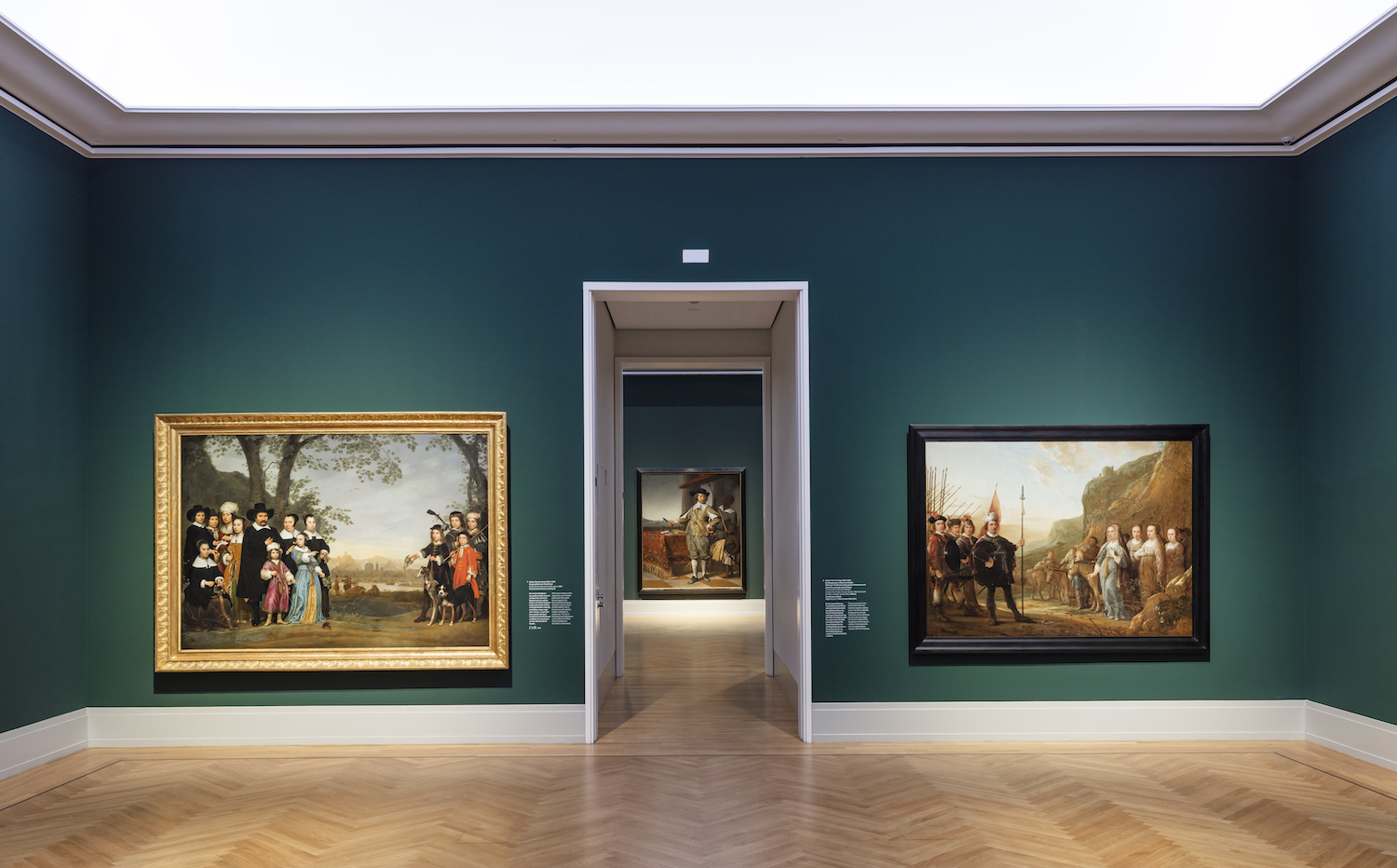
Anne Barz, the head registrar at the Museum Barberini in Potsdam, spent much of the past few weeks on FaceTime as 26 conservators from all over the world watched her team install an exhibition of more than 100 artworks, including many by Rembrandt.
Due to the pandemic, each conservator—from institutions including the Mauritshuis in The Hague, the Rijksmuseum in Amsterdam, Kunstmuseum Basel, and the Albertina Museum in Vienna, as well as several US institutions—sat at a desk in a home office or elsewhere and remotely oversaw the installation of the work they were responsible for.
In pre-pandemic times, they would almost certainly have been in attendance. And hanging this show was even harder than deinstalling the 40 Monet loans the Potsdam museum had to ship out last summer, Barz says, which was also done with conservators calling in.
But this is the new normal.
Museum Barberini. Photo: David von Becker
The occasion was the exhibition “Rembrandt’s Orient,” which examines the Dutch artist’s Eurocentric fascination with the far East (to where Rembrandt never traveled).
And notably, it is the first exhibition that the Museum Barberini has had to install almost exclusively with virtual couriers.
“The partner at the other end knows the painting so well that they can recognize the cracks through our call,” Barz tells Artnet News. “Sometimes, we need instructions, but mostly it is just a trust issue,” she says.
Rembrandt Harmensz van Rijn Daniel and Cyrus before the Idol Bel, (1633). © The J. Paul Getty Museum, Los Angeles.
Before the pandemic, fragile or expensive works were almost always chaperoned by a personal courier who would oversee it from the moment it left its home museum or storage facility, until it was installed somewhere else in the world. The courier would watch it on the airport tarmac, see it get loaded onto a truck, take it through customs, and drive it to a museum—all without ever taking their eyes off the piece.
Because loans do not come with safety deposits or rental fees, making it paramount that a lender has a borrowing institution’s full confidence that it will be taken care of properly, whatever the cost.
“It is an extremely expensive process,” Barz says.
Loaning a work from the US generally means business class plane tickets, hotel fees, and per diems. “We are speaking about €20,000 in costs for that person’s travel,” Barz says. If every courier for the Monet exhibition had travelled from the US to Berlin, the whole process could have cost as much as €800,000.
But the pandemic has accelerated changes in the field, as companies like Articheck in the UK seek to make pathways.
The company’s art logistics app, Articheck, provides a virtual courier system in which all transit information, quality checks, and communications between parties are centralized in one place.
“The concept was born from the transit disruptions during the pandemic, but I soon understood there would be long-lasting effects on the art world due to the economic fallout, an increased need for clear remote communication, and the requirement to embrace digital technologies,” CEO Annika Erikson tells Artnet News.
To track a work as it travels one way by air, the technology costs around £500—more than a 90 percent savings when compared to traditional couriers.
Articheck’s Virtual Courier. Courtesy Articheck.
Another program, ParceLive, gives real-time information about the status of a work through light sensors monitoring when a crate has been closed, open, or even tilted. Drop sensors track the movements of the package around the clock, and also check for temperature conditions.
Paul Smith of the London-based art logistics company Martin Speed tells Artnet News that services like these work very well, and that clients are willing to accept them as a viable alternative.
“Once you can show that something like this works, it eases the burden,” Smith says. “It adds an extra layer of care that maybe would not have been there with a physical courier.”
And while neither Barz nor Smith think personal couriers will disappear, additional tools can help sustain trust and transparency in the museum shipping business.
“Change is always a little scary,” Smith says. “But Covid-19 has moved the agenda along.”
“Rembrandt’s Orient” is on view at the Museum Barberini in Potsdam, Germany, until June 27.